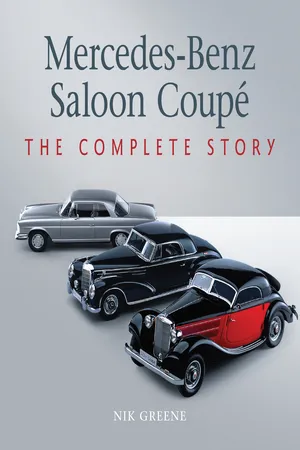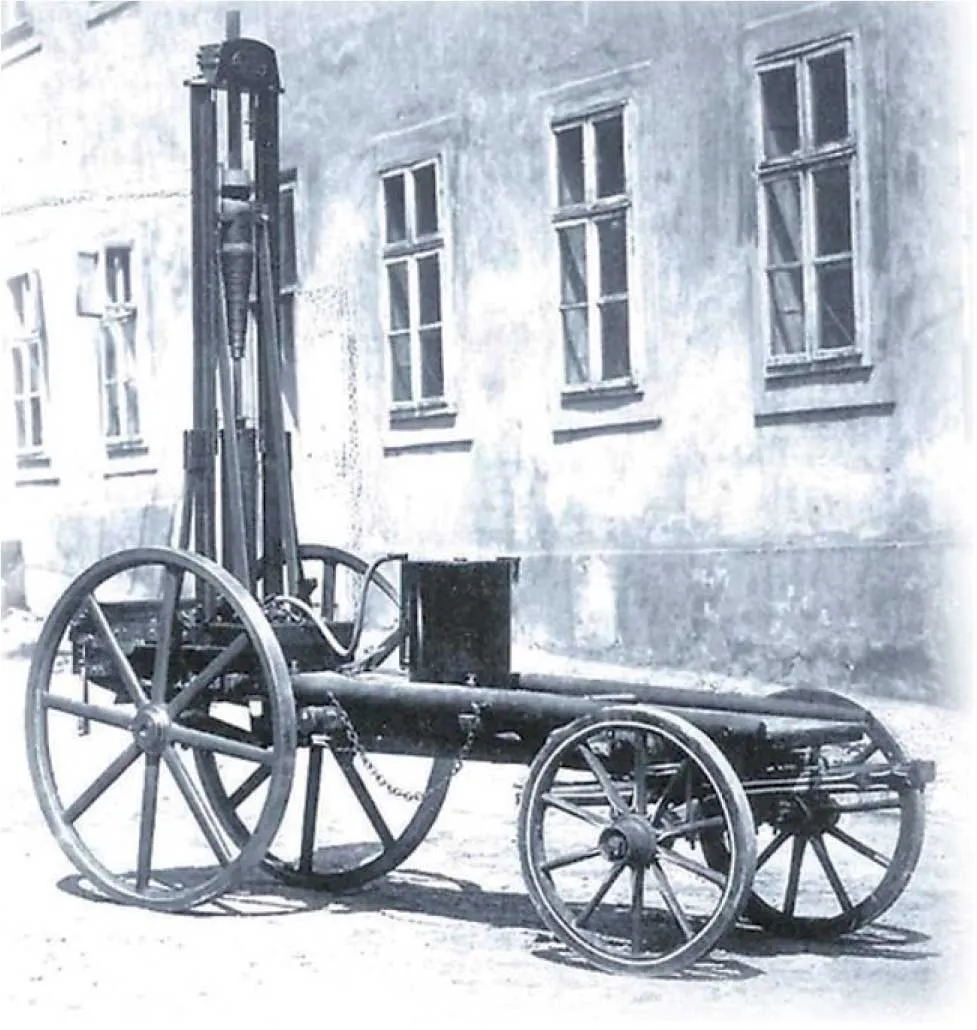![]()
CHAPTER ONE
EARLY AUTOMOTIVE HISTORY
The idea of self-propelled vehicles can be traced back as far as third-century China: during the construction of the Great Wall, workers used ‘wheelbarrows’ with sails to aid with transporting materials more quickly. Emperor Liang Yuan Ti (fifth century ad) also documented that he built a wind chariot capable of transporting thirty men over several hundred li in one day (1 li = 500m or 600yd).
Workers on the Great Wall of China used wind and sail to assist with barrow propulsion.
Gaocang Wu Shu succeeded in building a wind chariot. There was another built in about AD 610 for the Emperor Yang of Sui (r. 604–617), as described in the Continuation of the New Discourses on the Talk of the Times.
Leonardo da Vinci, some time around the year 1478, drew plans for his own self-propelled cart, which was powered by coiled springs and also featured steering and brake capabilities. It is uncertain whether it was actually built, but it was said to be a special attraction at the Renaissance festivals. The regulator mechanism, like that of a more modern differential, propelled the vehicle forward smoothly at the release of a lever, while the steering was programmable to go either straight or at pre-set angles. In 2006, Italy’s Institute and Museum of the History of Science in Florence built a working model based on da Vinci’s design and, to the surprise of many, the cart worked.
Leonard da Vinci’s own ‘self-propelled’ cart (left) with the 2006 working model built by the Institute and Museum of the History of Science in Florence.
One of the most famous examples of a self-propelled vehicle – thanks to an engraving rich in valuable information – is that of the mathematician Simon Thévenin, who was born in Bruges in 1548. He built a sailing cart for the ‘grandees of the court of the Prince of Orange to enjoy themselves’.
The chronicler of the time Jean de la Varende reported that twenty-eight people climbed into this sailing cart, amongst whom were the ambassadors of the emperor, the great lords of France, England, Denmark and even an illustrious prisoner, Admiral Don Francisco of Mendoza. The ‘flying chariot’ managed to travel an estimated distance of 75km (47 miles) in less than two hours at an average speed of around 37km/h (23mph); it actually reached 60km/h (37mph) and at one point the speed ignited the axles. The Thévenin chariot was exhibited at the Museum of Newport.
In 1769, Nicholas-Joseph Cugnot invented the first powered vehicle in history capable of transporting passengers, named the Cugnot in honour to its creator. It was a heavy three-wheeled vehicle purposely built from timber, and it was powered by a 2-cylinder steam engine that needed a huge boiler attached to the front. The single front wheel worked like a guide wheel to steer the vehicle on its course. All this made the vehicle extremely slow and difficult to drive, but nevertheless it appeared thirty years before the invention of the first steam locomotive.
Nicholas-Joseph Cugnot’s steam powered vehicle appeared thirty years before the invention of the first steam locomotive.
Cugnot started a trend, and for the next forty years or so there were a number of ‘steam-powered’ carriages, including that of Richard Trevithick in 1801, which became known fondly as the ‘Puffing Devil Road Locomotive’. Although it became a precursor to the railway steam engine, the engineering principles of external combustion contributed greatly to the development of the hydrogen-powered internal combustion engine of François Isaac de Rivaz in 1807.
The hydrogen-powered internal combustion engine of François Isaac de Rivaz in 1807.
The horseless carriage went through many variations in power source, including compressed air, hydrogen, oil and even electric motors, but it wasn’t until German inventor and engineer Siegfried Marcus that a motorized carriage powered by an internal combustion engine became a reality.
Siegfried Marcus’s 1864 motorized carriage, powered by an internal combustion engine.
The idea for Marcus’s first car, in around 1864–5, apparently came to him by chance while he was considering the production of illumination by igniting a mixture of gasoline and air with a stream of sparks. The reaction was so violent that it occurred to him to use it as a power source.
His first vehicle was a handcart that married a two-cycle, one-cylinder engine geared to the rear wheels without any intervening clutch. To start it, it was necessary to have a strong man lift the rear end while the wheels were spun, after which it ran for about 180m (600ft). Marcus was so dissatisfied at its performance, however, that he dismantled it and didn’t return to it until ten years later due to a multitude of other commitments. These included patenting in the mid-1870s his ‘rotating brush carburettor’ device that would convert raw fuel to gas and mix with air to create a clean internal combustion, and adding to this in 1883 a patent for a low-voltage ignition magneto, enabling an efficient new petrol engine to be built.
In 1888–9, Märky, Bromovsky & Schulz built another car from scratch for Marcus, making him instantly famous throughout the world. The heavy vehicle, made of wood and iron, was not particularly suited to the uneven tracks and roads, but with the recently patented magneto-electric ignition and the spray brush carburettor used on the fourstroke engine, it made the engine extremely convenient and reliable for the day. It had a capacity of 1570cu cm, an output of approx. 0.75hp and generated a speed of around 6–8km/h (4–5mph).
The Märky, Bromovsky & Schulz horseless carriage built in 1888.
Thirty-five years after Marcus died, and soon after Hitler came to power, the Nazi regime attempted to destroy any evidence of Jewish success, so all record of the inventor’s achievements, blueprints, files and patents were destroyed, including a monument honouring Marcus at the Vienna Technical University. In 1950, however, Marcus’s second car was found where it had been hidden: bricked up behind a false wall of a Viennese museum by employees to protect it from Nazi destruction. So robust was this car that when it was retrieved it was still possible to drive it. In fact, it remains operable to this day and is now owned by the Austrian Automobile, Motorcycle and Touring Club in Vienna and on display at the Vienna Technical Museum; once in a while, it has even been seen trundling the streets of the city.
Most early vehicles, not to mention those that only existed on paper, were small, self-propelled carriages that were not capable of transporting people. As much as Siegfried Marcus achieved, when questioned he expressed the opinion that his vehicles would never succeed commercially and essentially further development was ‘a senseless waste of time and effort’.
Although Marcus can be credited with perhaps building the first purpose-constructed automobile with a ‘petrol internal combustion engine’ it has been accepted that his invention was purely an intellectual curiosity, and, just as he made clear, he had no interest in developing the ‘motor car’ to be become anything more.
If the horseless carriage were to become anything more than just an experiment, it needed more devotion and tenacity to develop it further. Karl Benz may not have been the first inventor of the motor car, but his greatest achievement lay in the tenacity with which he developed his idea of a ‘horseless carriage’ into a product for everyday use, which he then brought to market and made accessible for the entire world – unlike any of the other inventors mentioned here.
![]()
CHAPTER TWO
THE AGE OF THE MO...








